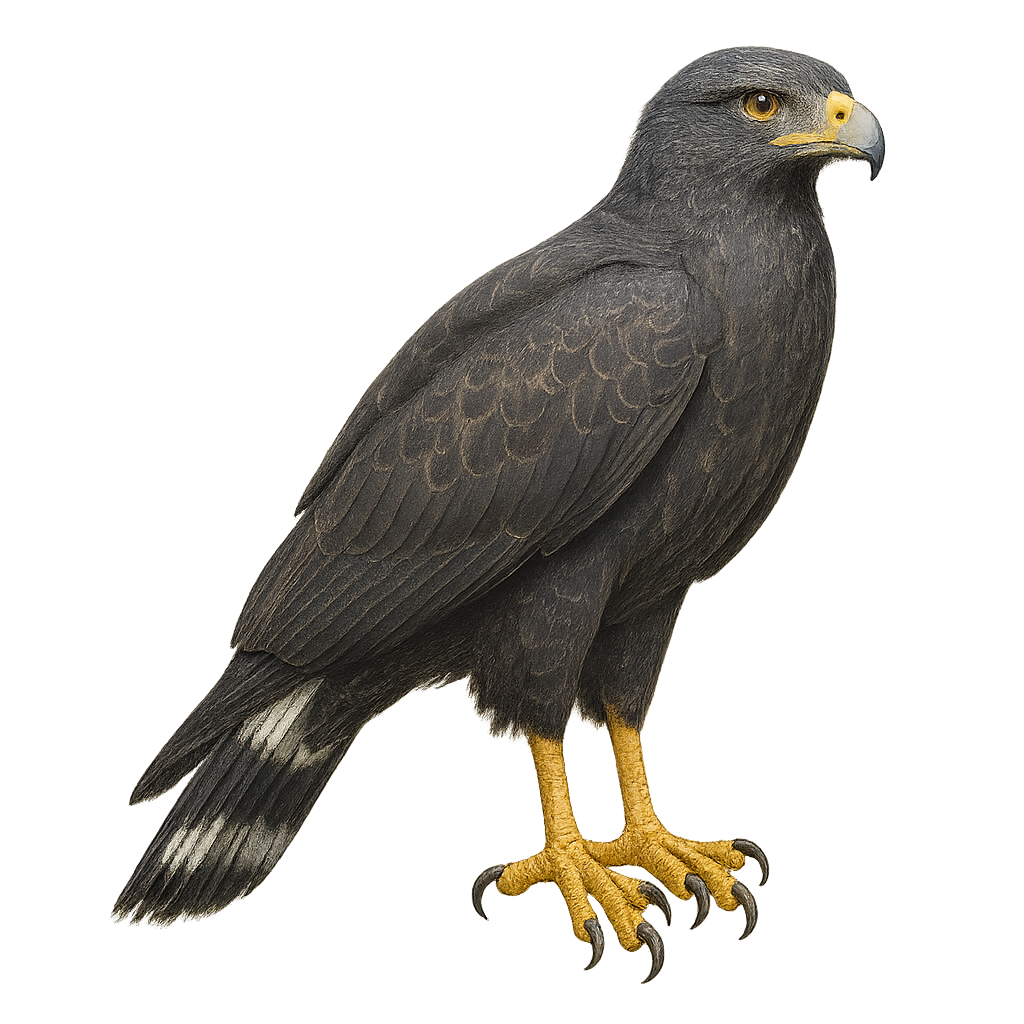Your wildlife photography guide.
Explore the common black hawk in detail, study its behavior, prepare your shots.
Where to observe and photograph the common black hawk in the wild
Learn where and when to spot the common black hawk in the wild, how to identify the species based on distinctive features, and what natural environments it inhabits. The WildlifePhotographer app offers tailored photography tips that reflect the common black hawk’s behavior, helping you capture better wildlife images. Explore the full species profile for key information including description, habitat, active periods, and approach techniques.
Common Black Hawk
Scientific name: Buteogallus anthracinus

IUCN Status: Least Concern
Family: ACCIPITRIDAE
Group: Birds
Sensitivity to human approach: Suspicious
Minimum approach distance: 30 m
Courtship display: March to May
Incubation: 32-34 jours
Hatchings: April to June
Habitat:
Riparian forests, mangroves, coastal areas
Activity period :
Primarily active during the day, with peak activity in the morning and late afternoon.
Identification and description:
The Common Black Hawk, scientifically known as Buteogallus anthracinus, is a medium-sized raptor found primarily in coastal regions and riparian forests of Central America and the southern United States. Its plumage is predominantly black with bluish sheen, and it features a distinctive white band on its tail. This bird of prey is often seen soaring above waterways, hunting for prey such as fish, crabs, and small vertebrates. Its call is a sharp, piercing whistle. The Common Black Hawk is territorial, often solitary or in pairs, and builds its nest in trees, usually near water.
Recommended lens:
400mm – adjust based on distance, desired framing (portrait or habitat), and approach conditions.
Photography tips:
To photograph the Common Black Hawk, it is advisable to use a 400mm lens or longer to capture detailed images from a distance. Look for areas near water where this bird is likely to hunt. Morning or afternoon light can provide ideal conditions for well-lit photos. Be patient and discreet to avoid scaring it away. A tripod can be helpful to stabilize your camera during extended shooting sessions.
The WildlifePhotographer App is coming soon!
Be the first to explore the best nature spots, track rutting seasons, log your observations, and observe more wildlife.
Already 1 429 wildlife lovers subscribed worldwide

